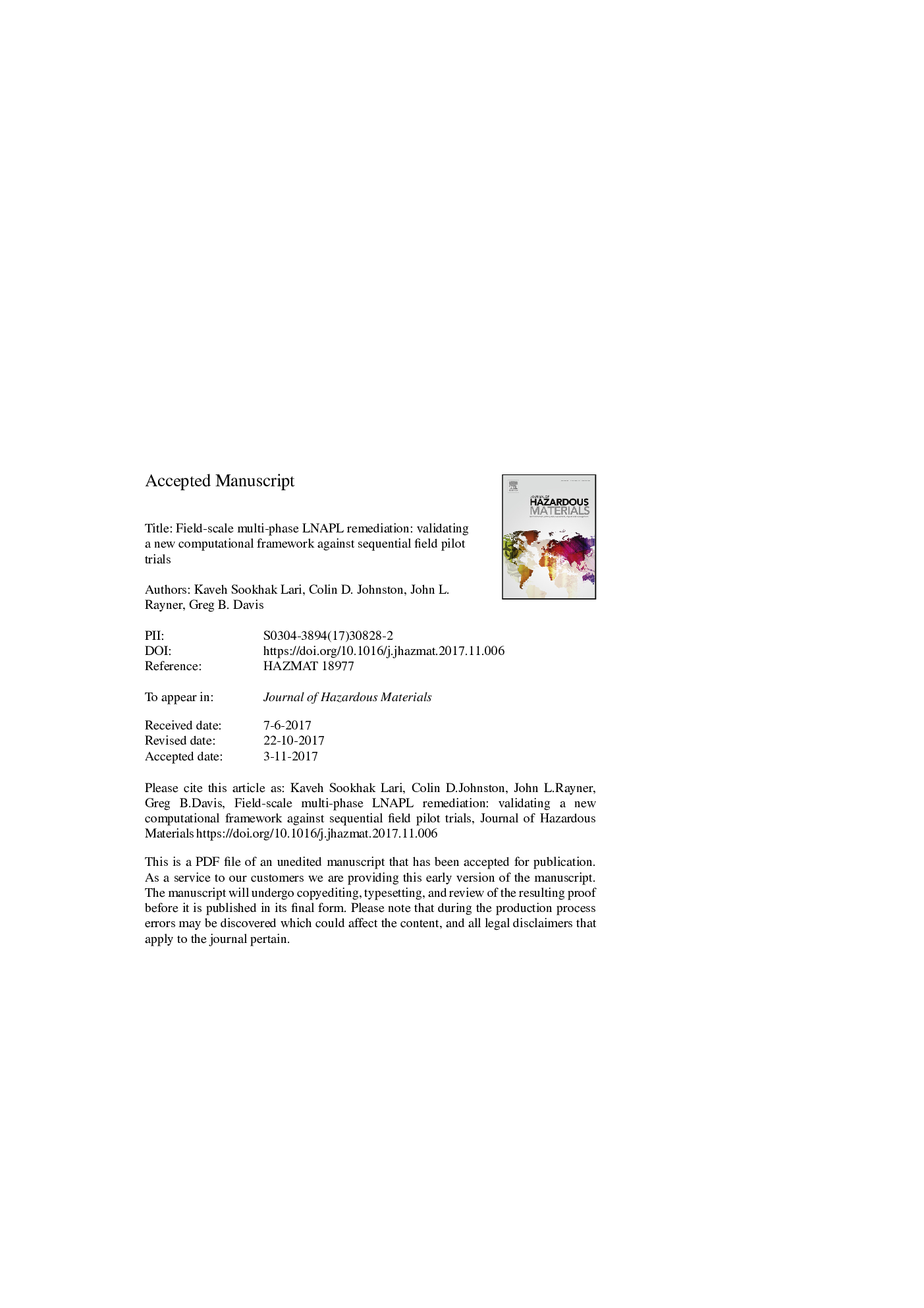| Article ID | Journal | Published Year | Pages | File Type |
|---|---|---|---|---|
| 6969304 | Journal of Hazardous Materials | 2018 | 32 Pages |
Abstract
Remediation of subsurface systems, including groundwater, soil and soil gas, contaminated with light non-aqueous phase liquids (LNAPLs) is challenging. Field-scale pilot trials of multi-phase remediation were undertaken at a site to determine the effectiveness of recovery options. Sequential LNAPL skimming and vacuum-enhanced skimming, with and without water table drawdown were trialled over 78Â days; in total extracting over 5Â m3 of LNAPL. For the first time, a multi-component simulation framework (including the multi-phase multi-component code TMVOC-MP and processing codes) was developed and applied to simulate the broad range of multi-phase remediation and recovery methods used in the field trials. This framework was validated against the sequential pilot trials by comparing predicted and measured LNAPL mass removal rates and compositional changes. The framework was tested on both a Cray supercomputer and a cluster. Simulations mimicked trends in LNAPL recovery rates (from 0.14 to 3Â mL/s) across all remediation techniques each operating over periods of 4-14Â days over the 78Â day trial. The code also approximated order of magnitude compositional changes of hazardous chemical concentrations in extracted gas during vacuum-enhanced recovery. The verified framework enables longer term prediction of the effectiveness of remediation approaches allowing better determination of remediation endpoints and long-term risks.
Related Topics
Physical Sciences and Engineering
Chemical Engineering
Chemical Health and Safety
Authors
Kaveh Sookhak Lari, Colin D. Johnston, John L. Rayner, Greg B. Davis,
